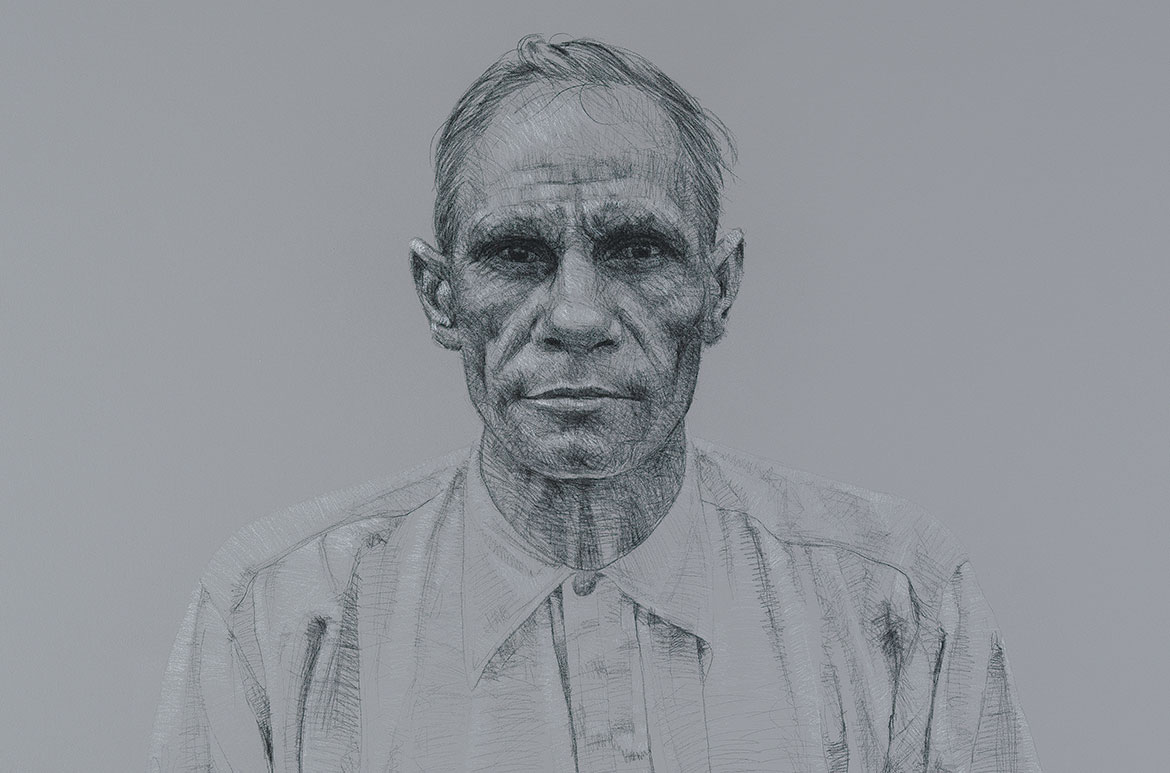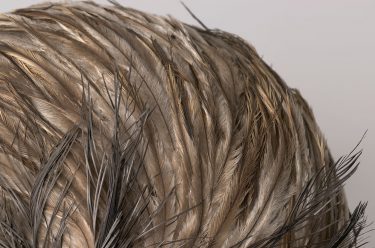Vernon Ah Kee is a Brisbane-based Aboriginal contemporary artist who has risen to the forefront of urban-based conceptual art practice. Ah Kee was born in Innisfail, North Queensland and his triptych neither pride nor courage 2006 (illustrated) is part of a series of large-scale hand-drawn family portraits.
On two of the three panels, Ah Kee shows his grandfather in two views — profile and frontal — reflecting the practices used by the anthropologist Norman B. Tindale (1900-93) in taking historical photographs of Aboriginal people between the 1920s and the early 1960s. These are now supplied to their descendants as family portraits, and are often cropped to appear less anthropological.
The panels featuring his grandfather also include a depiction of a glass slide, as per the historical records, with the language group and area attached, these read: ‘Waanyi Lawn Hill’. In the final image Ah Kee’s son takes the place of one of his older relations, here, Ah Kee rejects anthropological ideas that Aboriginal people were destined to die out quietly, asserting the continuation of an Aboriginal presence through the portrait of his young son.
Vernon Ah Kee ‘neither pride nor courage’

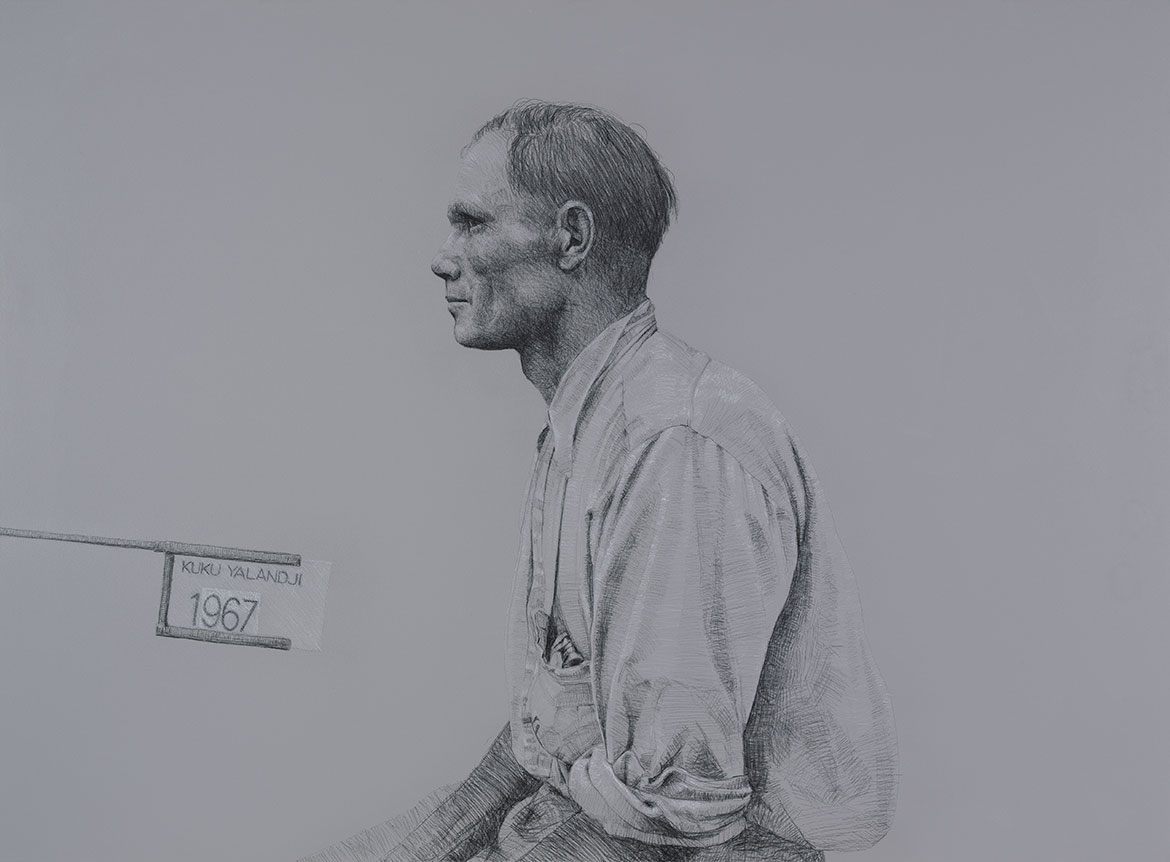
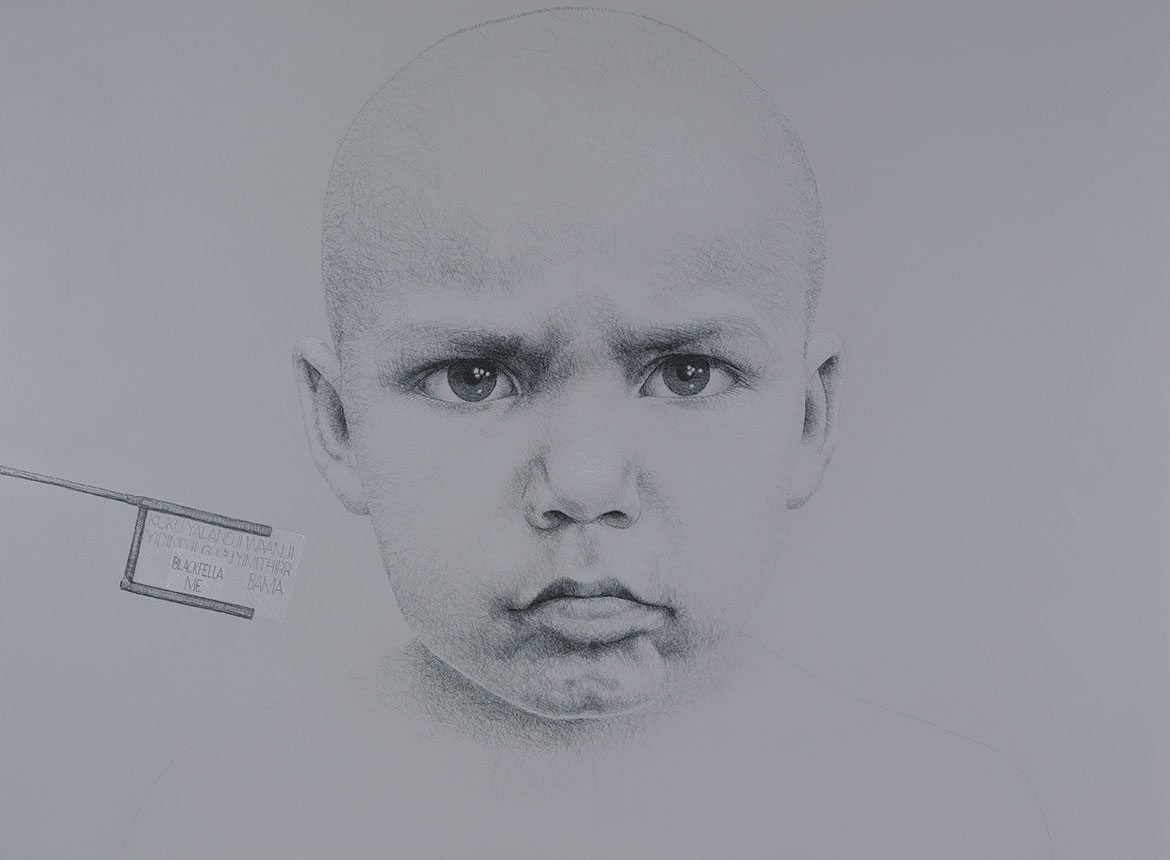
Delve into more works by Vernon Ah Kee
In Unwritten 2007 (illustrated), Ah Kee composes faces where most recognisable features remain undisclosed, these careful and elegant drawings are haunting, each drawing shows the marks of human-ness — depressions at the eyes, a ridge at the nose, the mouth, however, is not seen, implying that the voice is not heard. Although this series differs from Ah Kee’s other portrait works, they nonetheless follow a common theme.
Vernon Ah Kee ‘Unwritten’
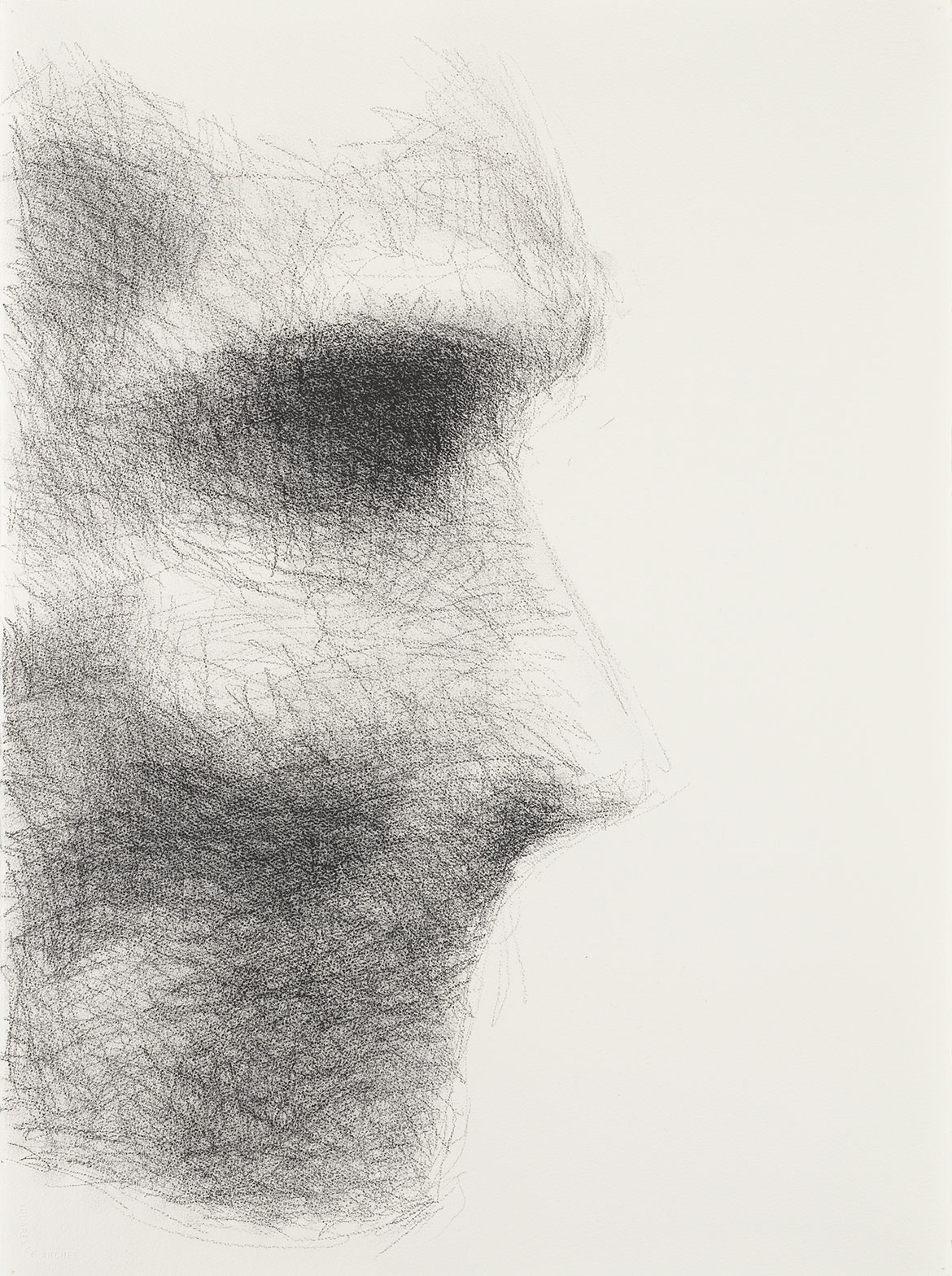
Vernon Ah Kee discusses his ‘Unwritten’ series
A group of three large-scale drawings on canvas a year later in 2008, depict important women from Ah Kee’s family (illustrated): his maternal great-grandmother Annie Ah Sam, paternal great-grandmother Bella Ami and his daughter, Annie Ah Kee. These complement the triptych neither pride nor courage 2006 (illustrated) of important male family members. Both represent cross-generational portraiture, reinstating his family members into the historical record and into contemporary Australian culture.
Ah Kee’s portraits are more than a genre-based exploration into the depths of family: they provide a pointed political remark about the past mistreatment of Aboriginal people, whose distrust and frustration can still be felt today. Responding to a history of romanticising Aboriginal people as exotic, or ‘an othered thing’, Ah Kee places Australian history under the microscope to highlight the sense of exclusion that is anchored in museum scientific records.
Ah Kee’s longstanding preoccupation with portraiture is motivated by the archives of the Norman Tindale collection at the South Australian Museum, which houses photographs of Ah Kee’s ancestors taken in the 1930s on Palm Island, some 65km off Townsville, these replicate and almost mirror the academic style portraits of a bygone era.
Apart from re-examining anthropological photographs of family, Ah Kee conveys a sense of beauty in his lush portraits as he concentrates on the faces of his subjects, constructing sumptuous images of his family.
Vernon Ah Kee ‘Annie Ah Sam’
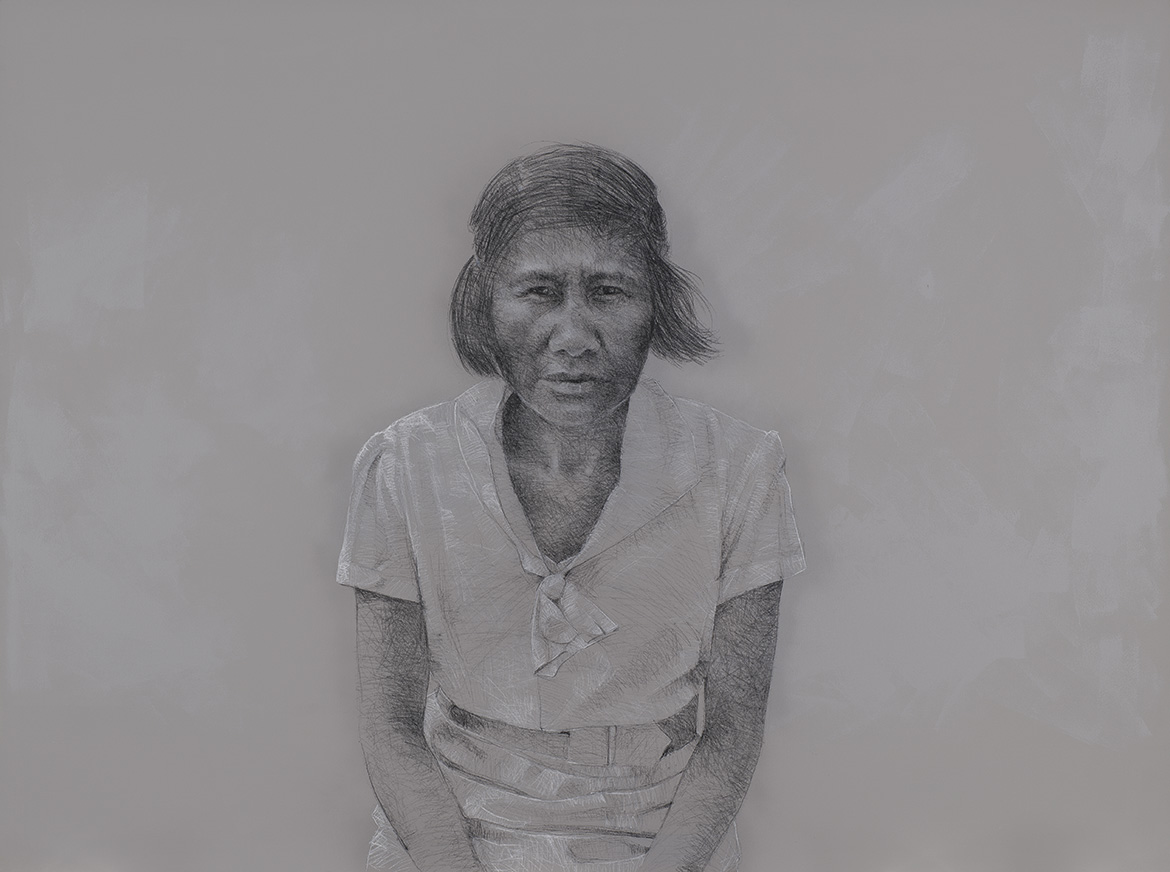
Vernon Ah Kee ‘Bella Ami’

Vernon Ah Kee ‘Annie Ah Kee’
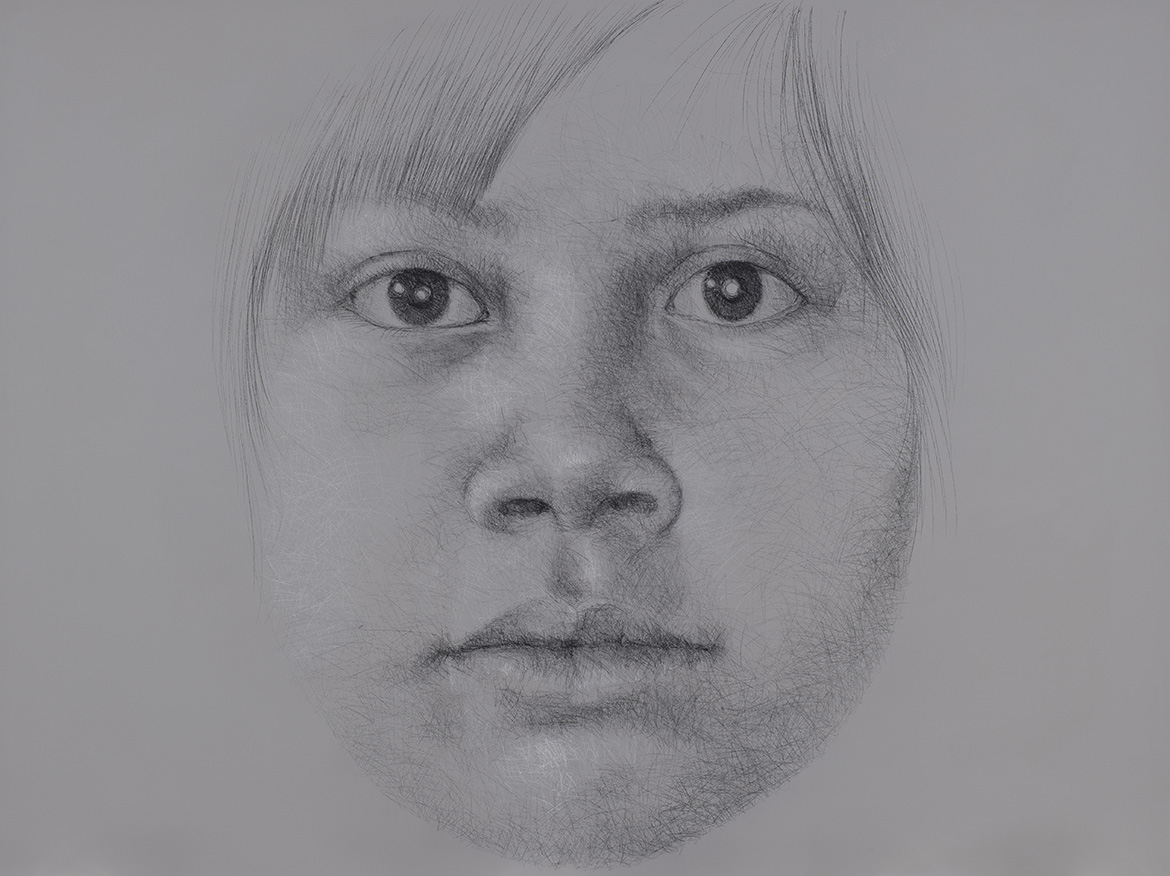
Ah Kee is well known for his large-scale hand-drawn portraits of family members, but another, darker element of the artist’s practice sits alongside those sumptuous and poignant familial portraits. Since 2006 Ah Kee has produced images of featureless bodies, partially formed humans — these are what Ah Kee has termed his ‘non-people’.
In these reworked Unwritten works from 2017 (illustrated), again Ah Kee’s armatures are only ascribed some of the characteristics of a human, these drawings are scaled at slightly larger than human form, each posed in a more stoic and menacing manner than many of his previous works. Here Ah Kee highlights a sense of frustration at the voicelessness of Aboriginal people in contemporary Australia.
Edited extracts by both Julie Ewington, former Head of Australian Art; and Bruce McLean, former Curator, Indigenous Australian Art, QAGOMA
Vernon Ah Kee ‘Unwritten’
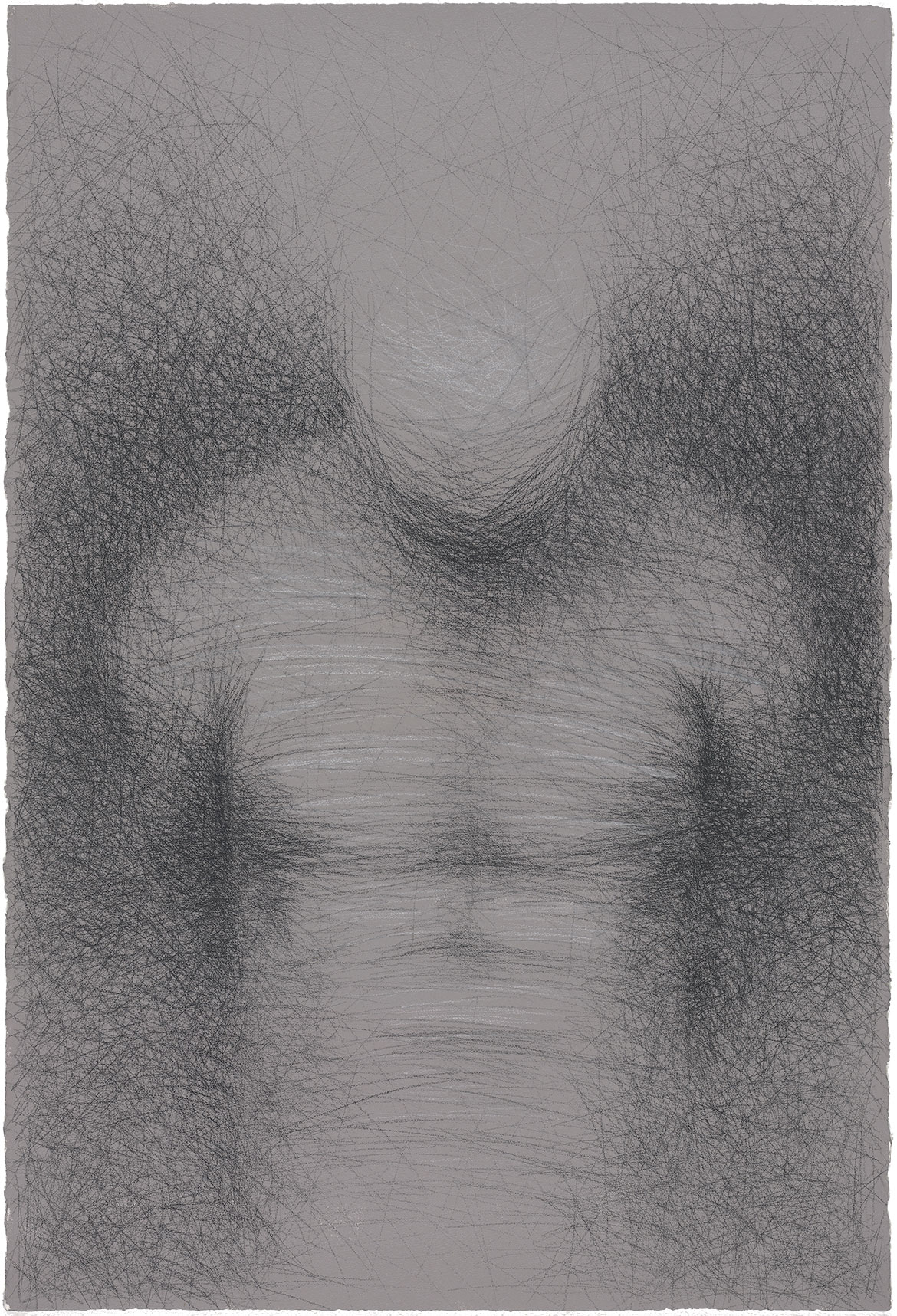

Vernon Ah Kee was born in Innisfail, North Queensland, in 1967. He is a descendant of the Kuku Yalanji, Yidinyji and Guugu Yimithirr people of North Queensland and has kinship connections to the Waanyi people of central western Queensland.
Acknowledgment of Country
The Queensland Art Gallery | Gallery of Modern Art (QAGOMA) acknowledges the traditional custodians of the land upon which the Gallery stands in Brisbane. We pay respect to Aboriginal and Torres Strait Islander elders past and present and, in the spirit of reconciliation, acknowledge the immense creative contribution Indigenous people make to the art and culture of this country. It is customary in many Indigenous communities not to mention the name of the deceased. All such mentions and photographs on the QAGOMA Blog are with permission, however, care and discretion should be exercised.
Featured image detail: Vernon Ah Kee neither pride nor courage 2006
#QAGOMA
